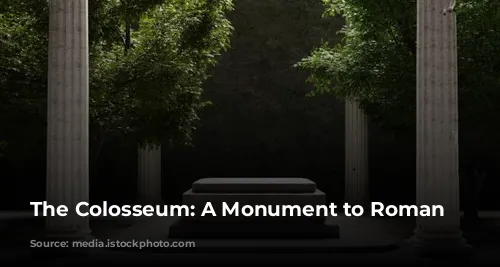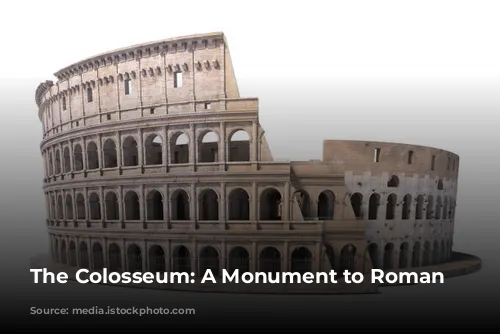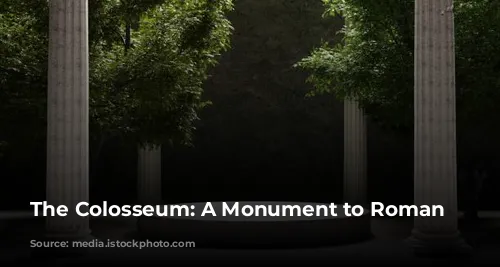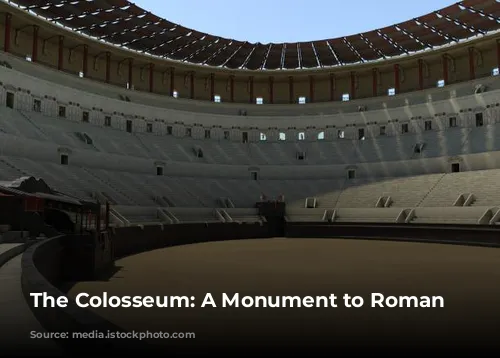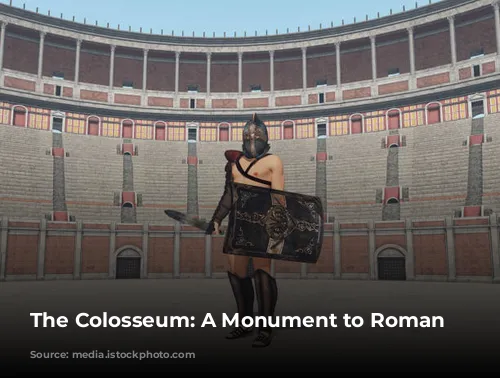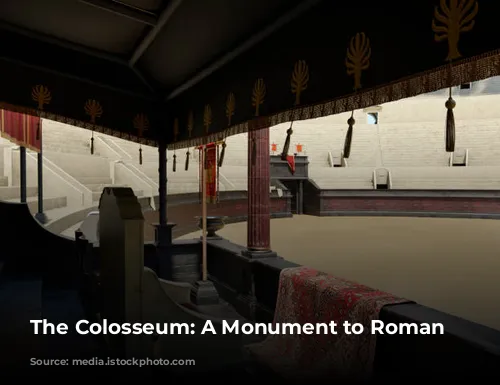The Colosseum, the largest amphitheater ever constructed by the mighty Roman Empire, stands as a testament to Rome’s power and ambition. Towering over other arenas built in distant provinces like North Africa and Eastern Europe, the Colosseum was designed to showcase Rome’s unmatched splendor. It was a statement: Rome, the heart of the empire, possessed superior resources and craftsmanship, outdoing even its own colonies.
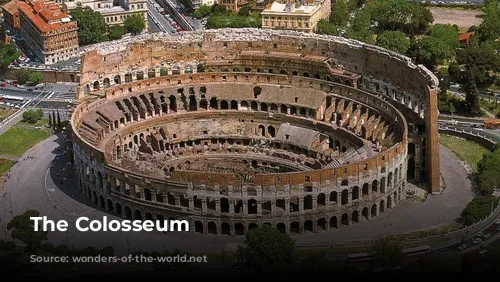
A Giant Ellipse of Entertainment
From a distance, the Colosseum appears perfectly circular, but a closer look reveals a subtle ovoid shape. This scientific term describes the shape of an egg, and in the case of the Colosseum, an elongated ellipse with multiple centers. This unique form is emphasized by the dramatic ratio of its length to width: 187.75 meters long to a mere 155.60 meters wide. The Colosseum’s imposing height, measuring 50.75 meters from the ground to its highest point, adds to its majestic presence. This figure excludes the towering masts that once adorned its peak, further enhancing its imposing scale.
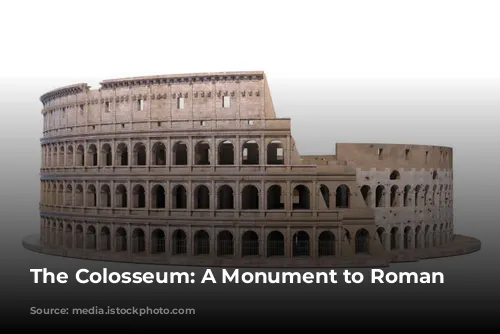
An Arena of Action
The Colosseum is a complex structure composed of three distinct elements: the central arena, the terraced seating, and the facade, which stands separate from the seating areas. While the seating remains intact, the facade is incomplete, offering a glimpse into the building’s internal structure. The arena itself is a massive space, stretching 83 meters in length and 48 meters in width, further emphasizing the Colosseum’s flattened, oval form. This unique shape is not simply a design choice; it was a standard feature of Roman amphitheaters, reflecting a preference for a specific aesthetic and functionality.
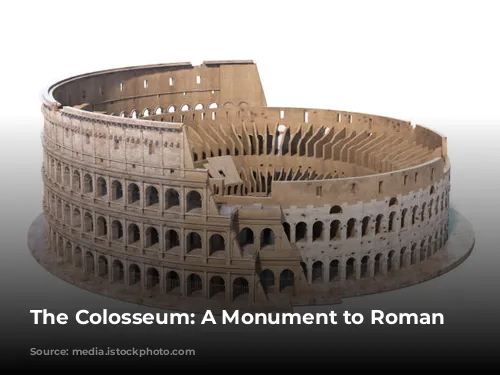
A Facade of Power
The Colosseum’s facade is an architectural masterpiece, showcasing 80 arcades arranged in three tiers. Each arcade, except for those on the bottom level, measures 4.2 meters in width and 6.45 meters in height. The lower arcades are slightly taller, reaching 7.05 meters. This impressive facade, with its intricate arches and decorative elements, served as a powerful symbol of Roman strength and dominance.
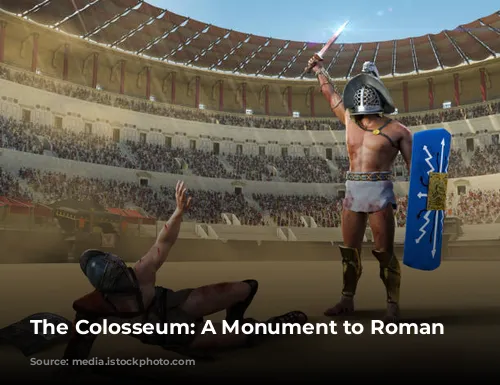
A City Within a City
The Colosseum’s sheer size is awe-inspiring, with a capacity of 75,000 to 80,000 spectators. On days of gladiatorial combat or other spectacles, Rome emptied its streets as its citizens flocked to witness these grand events. The Colosseum was more than just an amphitheater; it was a microcosm of the city itself, a space where the entire community gathered for entertainment and shared experiences.

A Hierarchy of Spectators
The Colosseum’s seating was meticulously designed to reflect the social hierarchy of ancient Roman society. The most prominent citizens were granted the best seats, while those of lower status occupied the less desirable sections. This arrangement served as a visible reminder of the social order, with each spectator’s position within the Colosseum reflecting their place in Roman society.
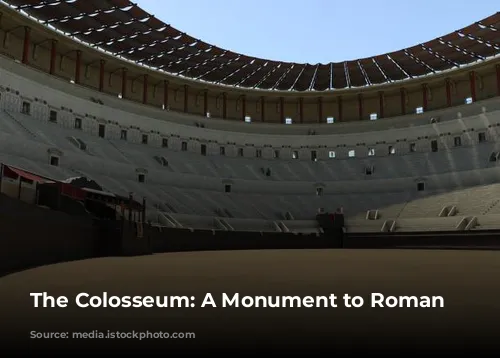
A Legacy of Grandeur
To fully appreciate the Colosseum’s size and significance, it’s helpful to compare it to other Roman amphitheaters. The amphitheater of Leptis Magna, built in 56 AD by Emperor Nero, boasts dimensions of 121 x 111 meters, with an arena measuring 57 x 47 meters. Situated on the North African coast, this amphitheater stands as a testament to Rome’s presence throughout its vast empire.
The amphitheater of Pompeii, built 150 years earlier in 80 BC, is another impressive example of Roman architecture. Constructed by two prominent magistrates, Caius Quinctius Valgus and Marcus Porcius, it measures 135 x 104 meters, with an arena of 67 x 35 meters. This well-preserved structure offers a glimpse into the grandeur of Roman amphitheaters from a previous era.
Even in France, the influence of Roman architecture is evident. The amphitheater of Nîmes, built in 90 AD, stands as a testament to Roman power in Gaul. Though smaller than the Colosseum, it still boasts impressive dimensions: 133 x 101 meters, with an arena measuring 69 x 38 meters.
Other examples of Roman amphitheaters can be found throughout the Roman world, including the amphitheater of Mérida in Spain, built in 8 BC, and the amphitheater of Pula in Croatia, constructed in 79 AD. Each of these structures provides a glimpse into the architectural prowess and cultural influence of the Roman Empire.
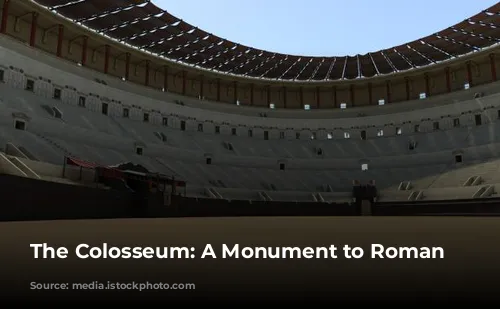
A Timeless Wonder
The Colosseum, with its grandeur and historical significance, continues to captivate visitors from around the world. It stands as a powerful symbol of Roman ingenuity and the enduring legacy of ancient Rome. Its massive scale and architectural complexity remind us of the power and ambition of a civilization that once dominated the known world.

